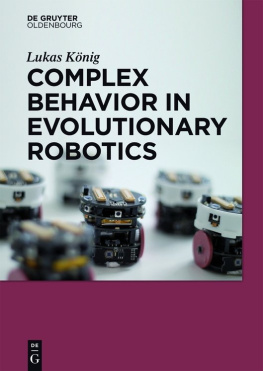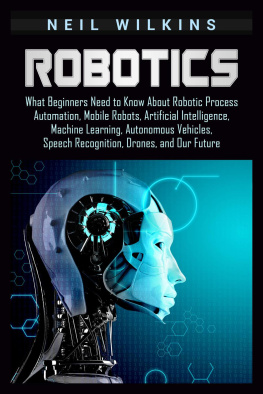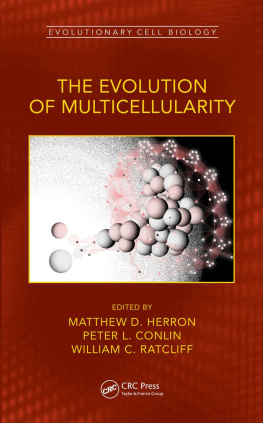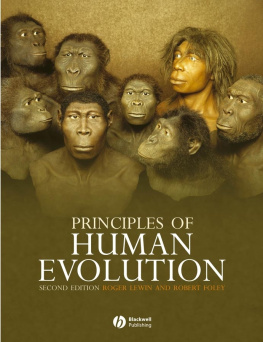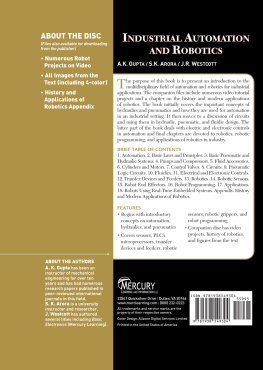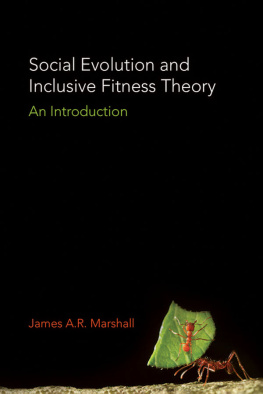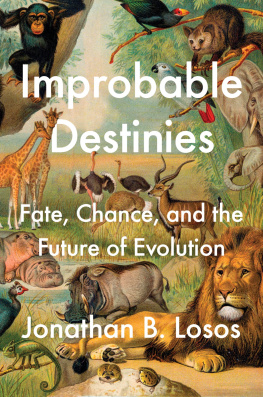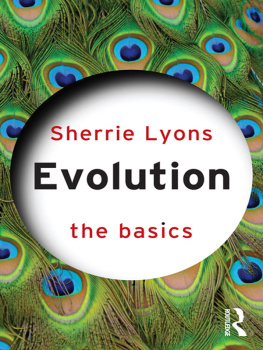Lukas König - Complex Behavior in Evolutionary Robotics
Here you can read online Lukas König - Complex Behavior in Evolutionary Robotics full text of the book (entire story) in english for free. Download pdf and epub, get meaning, cover and reviews about this ebook. year: 2015, publisher: De Gruyter Oldenbourg, genre: Home and family. Description of the work, (preface) as well as reviews are available. Best literature library LitArk.com created for fans of good reading and offers a wide selection of genres:
Romance novel
Science fiction
Adventure
Detective
Science
History
Home and family
Prose
Art
Politics
Computer
Non-fiction
Religion
Business
Children
Humor
Choose a favorite category and find really read worthwhile books. Enjoy immersion in the world of imagination, feel the emotions of the characters or learn something new for yourself, make an fascinating discovery.
- Book:Complex Behavior in Evolutionary Robotics
- Author:
- Publisher:De Gruyter Oldenbourg
- Genre:
- Year:2015
- Rating:4 / 5
- Favourites:Add to favourites
- Your mark:
- 80
- 1
- 2
- 3
- 4
- 5
Complex Behavior in Evolutionary Robotics: summary, description and annotation
We offer to read an annotation, description, summary or preface (depends on what the author of the book "Complex Behavior in Evolutionary Robotics" wrote himself). If you haven't found the necessary information about the book — write in the comments, we will try to find it.
Complex Behavior in Evolutionary Robotics — read online for free the complete book (whole text) full work
Below is the text of the book, divided by pages. System saving the place of the last page read, allows you to conveniently read the book "Complex Behavior in Evolutionary Robotics" online for free, without having to search again every time where you left off. Put a bookmark, and you can go to the page where you finished reading at any time.
Font size:
Interval:
Bookmark:
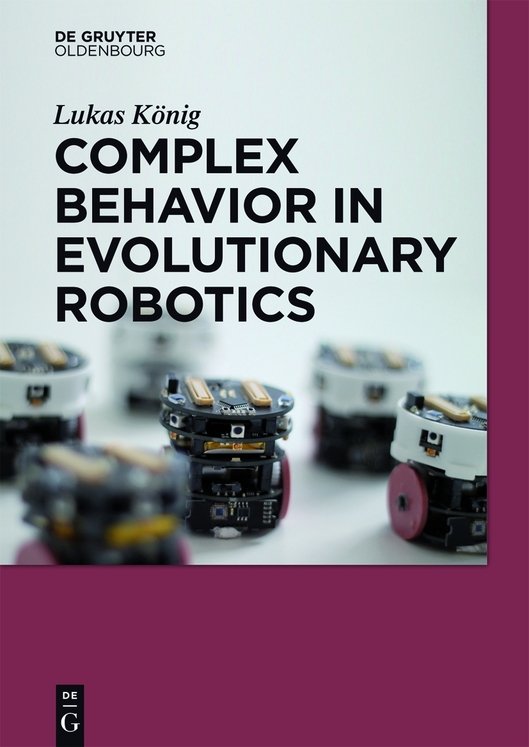
This book presents and concludes a major part of my research conducted from early 2007 until today. By far the greatest fraction of this time and, more importantly, the best of the presented ideas are strongly connected to the Institute AIFB where I worked as a research associate since December 2007. Here, my advisor Prof. Hartmut Schmeck gave me the opportunity to follow my research interests virtually limit-free in a creative and inspirational working environment, for which I am deeply grateful to him. I also thank him for his support and trust, even in difficult times, and for his constructive, detailed, often seemingly pedantic remarks which repeatedly led me to a better understanding of my own work.
However, as I will show in the book, any environment is inextricably linked with the agents acting in it, and this is particularly true of a working environment. Therefore, I am just as grateful to all my colleagues (former and current) for being so creative and inspirational, and for simply constituting an enjoyable company. In particular, I thank (in order of appearance) Sanaz Mostaghim, Ingo Paenke, Felix Vogel, Holger Prothmann, Andr Wiesner, Daniel Pathmaperuma, Christian Hirsch, Marc Mltin, Friederike Pfeiffer-Bohnen, Pradyumn Shukla, Micaela Wnsche, Fabian Rigoll, Fredy Rios and Marlon Braun for some of the most valuable (in very different ways) scientific discussions I ever had. Furthermore, I thank Ingo Mauser, Daniel Pathmaperuma, Friederike Pfeiffer-Bohnen and Felix Vogel for proofreading early, probably rather unpleasant versions of the manuscript.
Creating a doctoral thesis, including the many tasks it brings along, required the so far greatest effort of my life. This amount of work cannot be handled without being backed up in the real world.
I thank my old friends, who never stopped being there for me, sometimes in person, always in my mind, and my new friends, the best of whom emerged from being mere colleagues at first, for reminding me of life beyond work. I am greatly thankful to my parents for encouraging me in not being satisfied with common opinions (which may well have become my most noticeable character trait today), to my grandfather for revealing me the joy of exploring everything and telling it to everybody (i. e., research and teaching) and to my grandmother for reminding me of the importance of studying (i. e., life beyond amusement). I adore my wife for showing me a computer scientist the beauty of nature (which may have given the thesis an esoteric touch at one place or another). Finally, I am most notably grateful to my whole family (naturally referring to my own as well as my wifes side) for supporting me in all those characteristic situations a PhD student gets into over time, and the few rather specific to myself.
Karlsruhe, December 2014
Lukas Knig
PS. Having little to do with the content of the book, I still cannot leave unmentioned an amazing contributing to a very special day: Thank you, little sister, for an exam celebration cake in the shape of my first computer including an eatable Basic program.
Preamble:
First Law: A robot may not injure a human being or, through inaction, allow a human being to come to harm.
Second Law: A robot must obey the orders given to it by human beings, except where such orders would conflict with the First Law.
Third Law: A robot must protect its own existence as long as such protection does not conflict with the First or Second Law.
The Three Laws of Robotics by Isaac Asimov
Future developments in robotic hardware technology will soon yield low-cost autonomous robots for various kinds of private and professional applications. The control of such robots in every-day situations, and even more under critical circumstances such as those given by medical applications, will require a profound understanding of the complex interactions of robots with each other and with humans. This understanding firstly includes knowledge about the generation of algorithms in the first place that allow for complex robotic activities to be executed. In many cases this generation is highly complex even for a single robot, and gets harder when a swarm of robots is involved or when heterogeneous robots interact with each other. Secondly, dependable validation methods will be needed that go beyond mere algorithmic analysis and are capable of proving complex real-world properties of robot behaviors. For example, Isaac Asimovs famous Three Laws of Robotics are such complex properties that are undeniably desirable, but by todays techniques extremely hard to accomplish in a real robotic system, and hardly ever provable for all circumstances. The field of ER provides promising ideas that might bring forth methods to treat these issues in the future.
The contributions of this thesis to the field of ER can be arranged along the axes of (a) trustworthiness of both the behavior generation process and the resulting behaviors (mainly items 2., 3. and 4. in the chapter-wise listing below), and (b) generation of complex behaviors for autonomous robots (mainly item 3. below). Further contributions concern the field of ABS (item 1.). Following the chapter structure of the thesis, the major contributions can be summarized as follows:
- Proposal, implementation and evaluation of a programming pattern for agent-based simulations intended to improve structuredness and code reusability in implementations by non-expert programmers (). Experiments with student test persons suggest that the proposed architecture implemented within the simulation program EAS yields more structured and reusable implementations than the state-of-the-art simulation programs MASON and NetLogo.
- Proposal of a novel FSM-based control model for robots (Moore Automaton for Robot Behavior; MARB) and a corresponding decentralized online-evolutionary framework, both applicable to various types of robots (). A comprehensive evaluation shows that robot behaviors of complexities comparable to the current state-of-the-art from literature can be evolved, by yielding fairly analyzable robot programs, thus, contributing to the trustworthiness of evolved behaviors in ER.
- Proposal of a highly flexible genotype-phenotype mapping based on FSMs (Moore Automaton for Protected Translation; MAPT) which, by mimicking the process of DNA to protein translation in nature, can be evolved along with robot behavior, leading to an automatic adaptation of the evolutionary operators to a given search space structure (). It is shown by extensive evaluation that the approach can lead to the desired adaptation and furthermore to a significant improvement of the evolutionary outcomes. The question of the extent, to which the approach can support the evolution of truly complex behavior, has to be finally resolved in future work. Nevertheless, the flexibility of the genotype-phenotype mapping and the systems capability to control essential aspects of its own evolution in a highly recursive manner build a foundation for a broad range of applications and further research options (see below).
- Proposal and evaluation of a formal framework for the prediction of success in evolutionary approaches involving complex environments (). By measuring the qualities of both fitness-based (explicit) and environmental (implicit) selection in variable states of abstractions from an intended real-world scenario (purely probabilistic estimations simulation runs laboratory experiments etc.), a probability of successful behavior evolution in the real environment can be estimated. Experiments with so far rather artificial simulation scenarios show that the model prediction matches the experimental outcome with a high precision.
Font size:
Interval:
Bookmark:
Similar books «Complex Behavior in Evolutionary Robotics»
Look at similar books to Complex Behavior in Evolutionary Robotics. We have selected literature similar in name and meaning in the hope of providing readers with more options to find new, interesting, not yet read works.
Discussion, reviews of the book Complex Behavior in Evolutionary Robotics and just readers' own opinions. Leave your comments, write what you think about the work, its meaning or the main characters. Specify what exactly you liked and what you didn't like, and why you think so.

